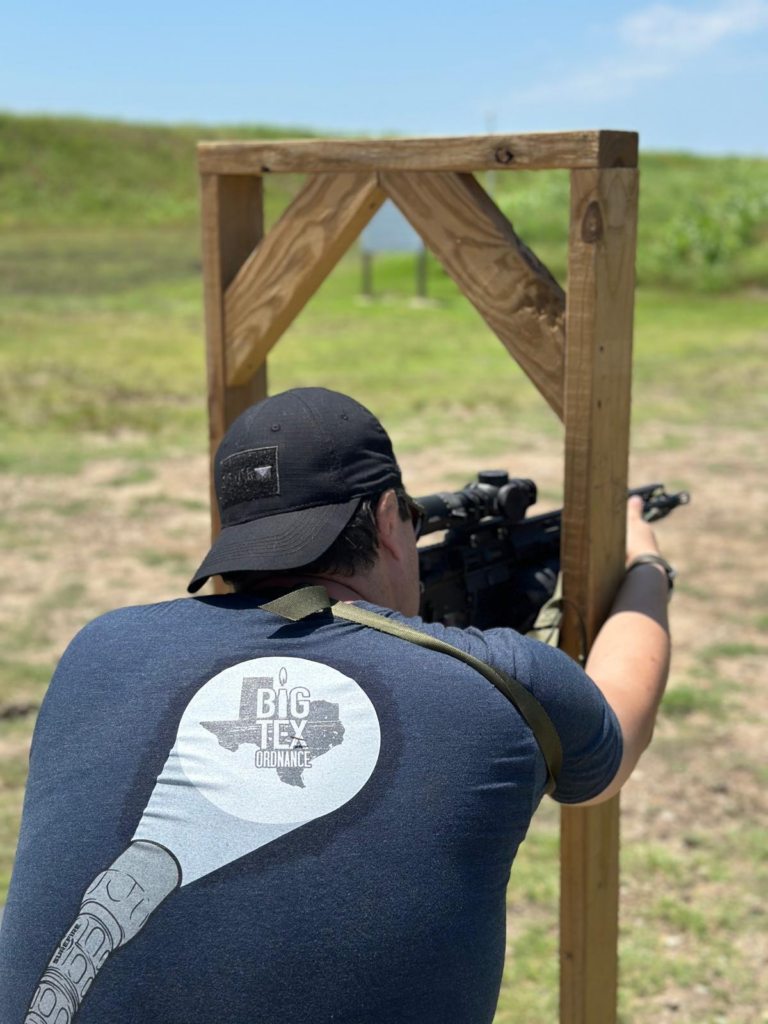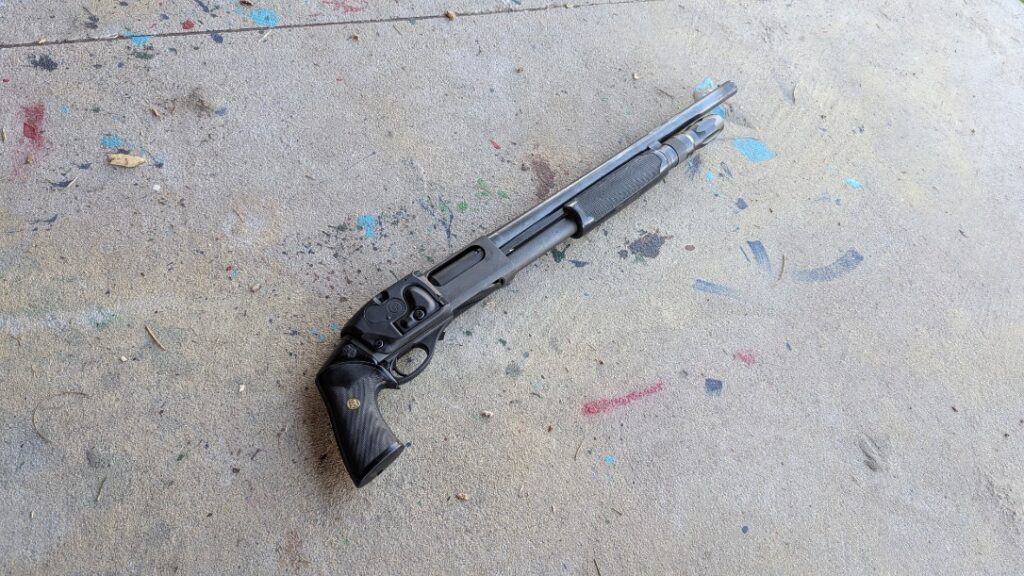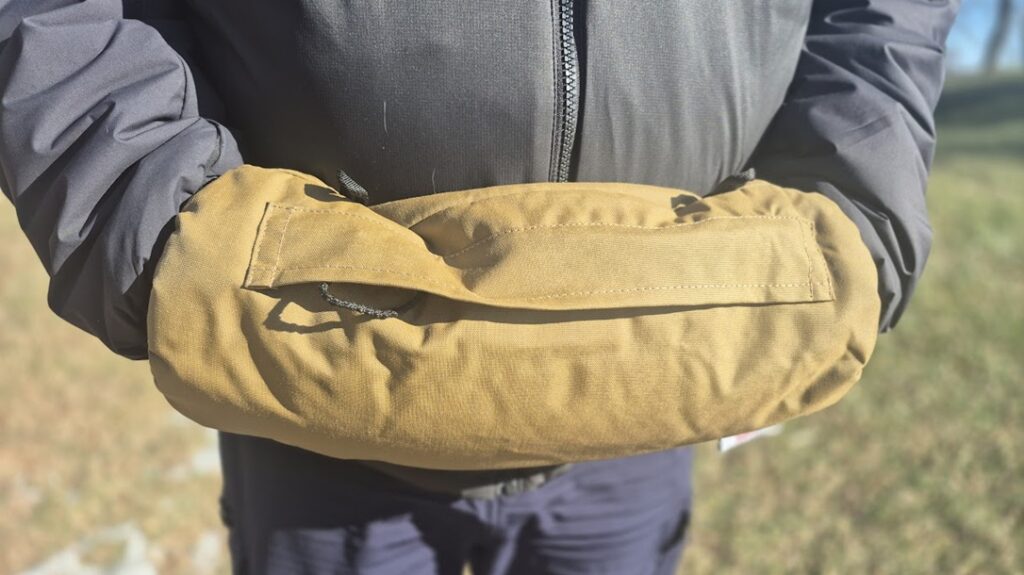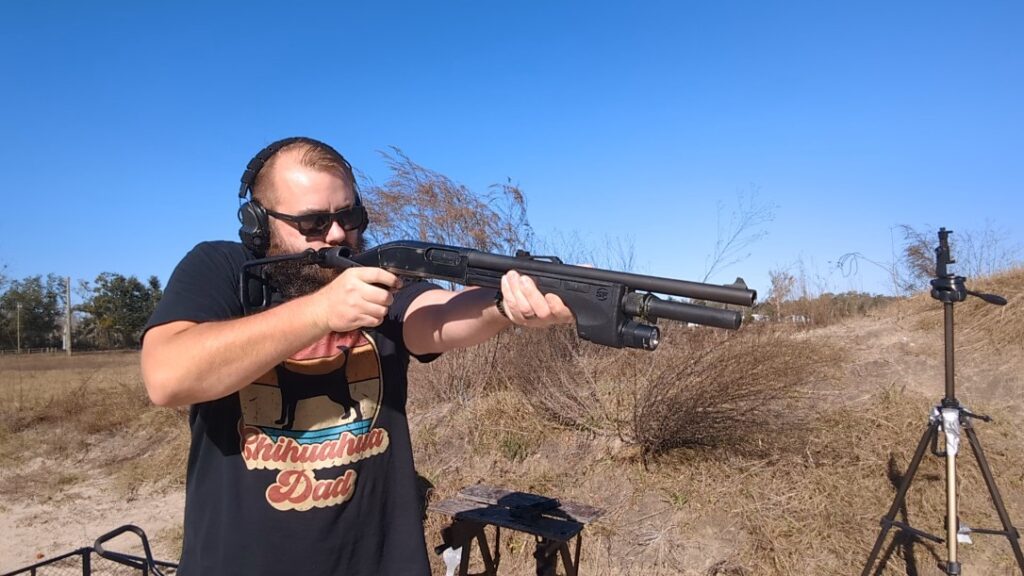Title Picture: A current-generation Nightforce ATACR 1-8 LPVO with the updated FC-DMx reticle mounted on a Reptilia AUS and their ROF mount with an Aimpoint ACRO P-2, all in peanut-butter. Honestly, I made it the cover image because it’s cool.
My Gear for the Cornerstone Performance LPVO Course
Because the emphasis of Cornerstone Performance’s LPVO course is on marksmanship and scoped-in shooting, the list of required gear isn’t extensive. Similarly, the round count wasn’t very high either for a 2-day carbine course. All one needed was at least 500 rounds of ammunition along with three rifle magazines, their properly mounted LPVO, and their carbine, of course (with a modern 2-point adjustable sling). Avoid bringing green-tip ammo to class; there’s simply too much steel to shoot.
Advertisement — Continue Reading Below
In my case, the only new piece of gear that I brought was the fairly new Primary Arms PLxC 1-8 LPVO with the ACSS Griffin reticle. Although this scope was launched last year, I’m currently shooting with it in order to do a full review at a later date.
The PLxC got my attention because of its relatively short length and lighter weight (that directly rivals the Nightforce NX8 LPVO). Also this particular scope famously landed Primary Arms a contract with the Department of Energy—a huge milestone for this Texas-based company.

Advertisement — Continue Reading Below
Lone Star Armory Carbine
Besides the new-to-me LPVO, which I’m generally liking so far, I did my shooting with the same carbine I shot at Bill Blowers’ class and for more than half of the Green Ops LPVO course. It is the 14.5” P/W midlength carbine I had Lone Star Armory build for me as a dedicated gun to run the Law Tactical ARIC carrier.
At this point, this carbine probably has at least 1,500 rounds through it, and I haven’t had any real issues other than some growing pains with the original ARIC T&E unit that I’ve been using. Perhaps the only thing I don’t love about this gun is its Schmid nickel-coated USGI trigger. Even for a standard single-stage AR trigger, this one, in particular, feels heavier. It’s not the end of the world, but I do think a scoped carbine deserves a little better.
Interestingly enough, one of the comments Wise made during the first day of the class was that a shooter was better off first upgrading their trigger instead of rebarreling their rifle. I ironically saw his point over both of these training days.
Advertisement — Continue Reading Below
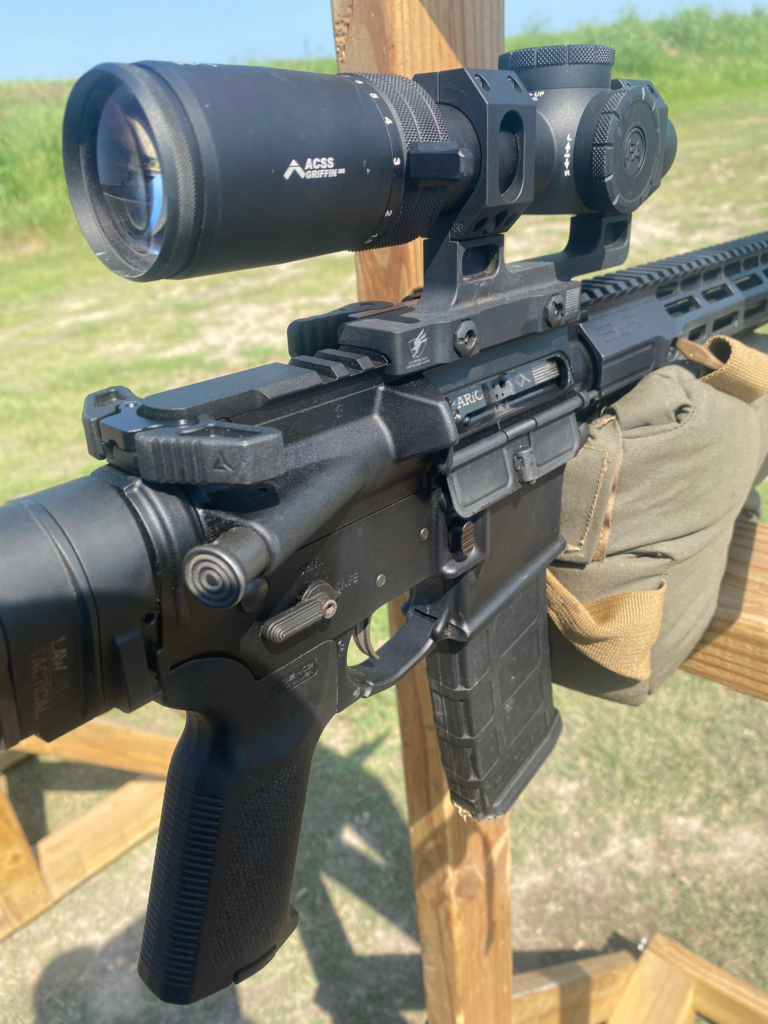
Insights And Takeaways
Even though Cornerstone Performance’s LPVO course isn’t labeled as an “advanced” carbine class, I don’t think I’d recommend it for brand-new shooters who aren’t comfortable shooting and handling the AR-15. It was easy to notice how basically everyone in the group of students was already familiarized and comfortable with the safe handling and operation of AR-15 pattern firearms. This includes the use of the modern 2-point sling.
To get the most out of their training dollar, the prospective student is ideally already comfortable with the AR-15 and its basic marksmanship protocols. At least, I think so.
Advertisement — Continue Reading Below
Since I started writing about firearms and shooting, I’ve now taken three different carbine courses overall. Two were LPVO-specific courses, while the course I took with Bill Blowers was optics-agnostic. Nonetheless, I’ve shot all three courses with LPVOs regardless because I’m so interested in them.
On the evening after the first day of the Cornerstone class, I actually switched mounts from a standard 1.5” mount to a taller 1.93” mount that another scope had been occupying. On the morning of the second day, I re-zeroed the scope in its new mount and carried on.
Now having some time behind standard 1.5” mounts and a taller 1.93”, I’m finding that I much prefer having the taller mount which seems to help bring the scope to eye-level better.
Advertisement — Continue Reading Below
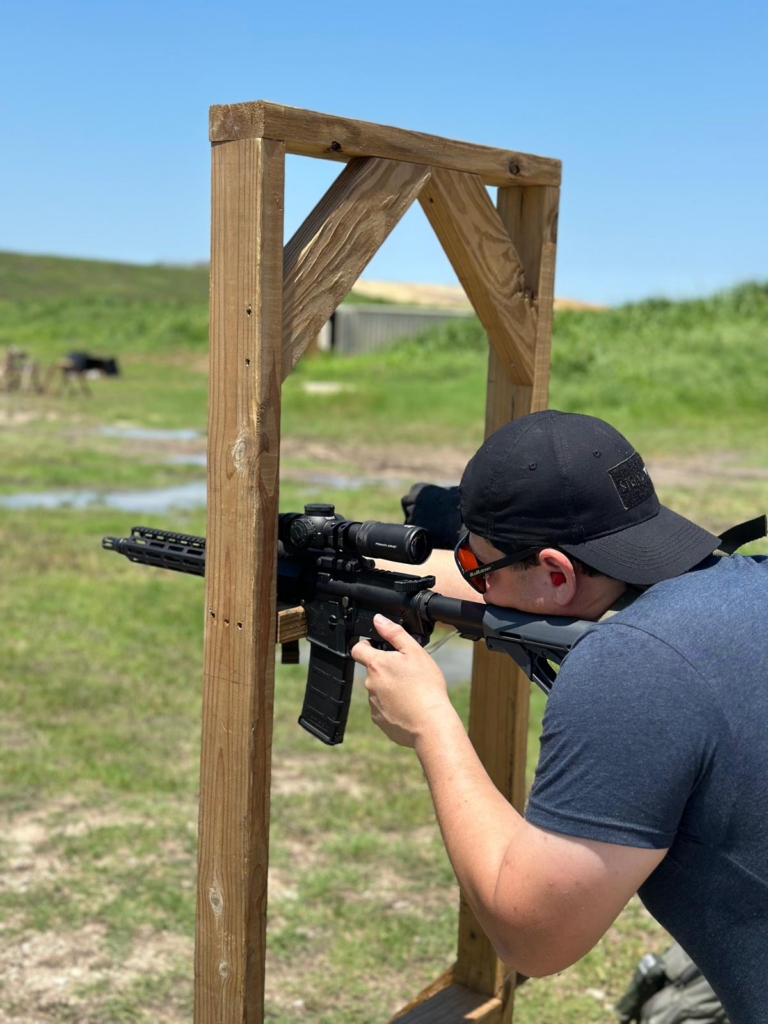
Final Thoughts
As a lifelong student and proponent of the LPVO, it’s been very fun going around and learning about shooting carbines with LPVOs from different sources. Cornerstone Performance’s course certainly won’t be the last LPVO course I take. However, I appreciated having a chance to hear about the LPVO from the context of an experienced police officer.
In this particular class, a good portion of the students were also local police officers. So, a lot of the discussions and conversations from the class had to do with cops and their patrol rifles. Contextually this was something fantastic to pick up on and add to my knowledge bank.
Advertisement — Continue Reading Below
In addition, it was nice that we did the majority of our shooting at steel targets between the 275 and 300-yard lines from barricades. Shooting at distances further than 100 yards isn’t a normal occurrence—at least for me, as a regular guy, it isn’t. Not only was popping steel at varying distances quite fun but it afforded every student in class multiple chances to get comfortable with shooting their targets a little further away.
Although Eric Wise did touch on height-over-bore concerns when it came to making careful, close-distance shots, the course didn’t really delve into CQB-style shooting much at all. Its focus was geared more towards using the optic at further ranges and those more deliberate shots.
Oh yeah, before I forget, I also had a lot of fun taking this class.
Advertisement — Continue Reading Below
